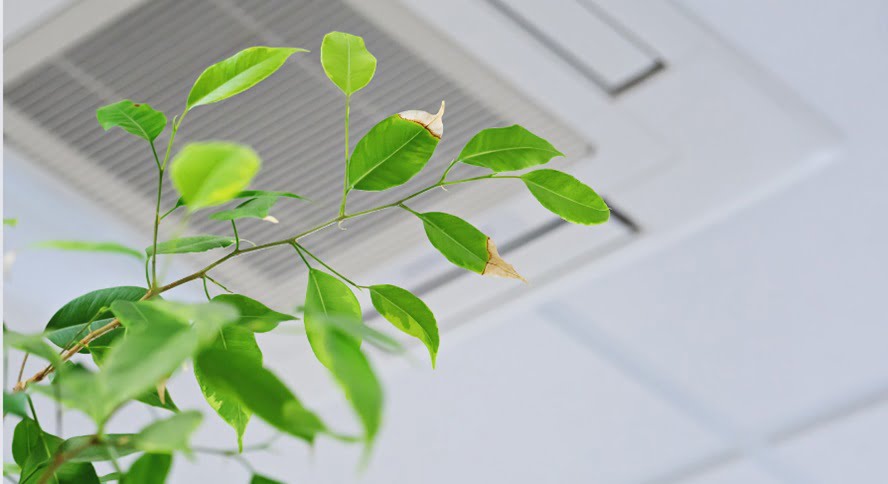
Indoor air quality plays a crucial role in ensuring a healthy living environment for you and your family. Poor indoor air quality can lead to various health issues, including allergies, asthma, and other respiratory problems. If you’re looking to enhance indoor air quality in Port Charlotte, seeking professional help and implementing effective strategies can make a significant difference. Here are some practical tips and strategies to improve indoor air quality in your home.
1. Regular Cleaning and Dusting
Keep Your Home Clean
Regular cleaning is essential for maintaining good indoor air quality. Dust, pet dander, pollen, and other allergens can accumulate on surfaces and become airborne. Dusting surfaces, vacuuming carpets, and mopping floors frequently can help reduce these pollutants. Use a vacuum cleaner with a HEPA filter to effectively capture fine particles and prevent them from recirculating in the air.
Wash Bedding and Curtains
Bedding, curtains, and upholstery can harbor dust mites and allergens. Wash these items regularly in hot water to eliminate dust mites and other contaminants. Using dust mite-proof covers on mattresses and pillows can also help reduce allergens.
2. Proper Ventilation
Use Exhaust Fans
Proper ventilation is crucial for reducing indoor air pollutants. Use exhaust fans in kitchens and bathrooms to remove moisture, cooking odors, and pollutants. Ensure that these fans vent to the outside rather than recirculating the air indoors.
Open Windows
When weather permits, open windows to allow fresh air to circulate through your home. This helps dilute indoor air pollutants and brings in cleaner outdoor air. However, be mindful of outdoor air quality, especially during high pollen seasons or when air pollution levels are high.
3. Control Humidity Levels
Use Dehumidifiers
High humidity levels can promote mold growth and dust mites, which can worsen indoor air quality. Use dehumidifiers to maintain indoor humidity levels between 30% and 50%. This helps prevent mold growth and reduces the concentration of allergens.
Fix Leaks
Leaky roofs, pipes, and faucets can contribute to high humidity and mold growth. Regularly inspect your home for leaks and repair them promptly to prevent moisture buildup and maintain a dry indoor environment.
4. Air Purifiers and Filters
Install Air Purifiers
Air purifiers can effectively remove airborne particles, allergens, and pollutants from your indoor air. Choose air purifiers with HEPA filters, which are capable of capturing particles as small as 0.3 microns. Place air purifiers in commonly used rooms for optimal results.
Change HVAC Filters
Regularly changing the filters in your HVAC system is crucial for maintaining good indoor air quality. Dirty filters can become clogged and reduce airflow, causing contaminants to circulate throughout your home. Check and replace HVAC filters every three months or as recommended by the manufacturer.
5. Avoid Indoor Pollutants
Use Low-VOC Products
Volatile organic compounds (VOCs) are chemicals that can off-gas from paints, cleaning products, and building materials. Choose low-VOC or zero-VOC products to reduce indoor air pollution. Ensure proper ventilation when using these products to minimize exposure.
Ban Smoking Indoors
Smoking indoors is a significant source of indoor air pollution. Implement a strict no-smoking policy inside your home to protect the health of your family and maintain better air quality. Encourage smokers to smoke outside and away from windows and doors.
6. Incorporate Houseplants
Houseplants can help improve indoor air quality by absorbing carbon dioxide and releasing oxygen. Some plants also have the ability to remove certain pollutants from the air. Popular air-purifying plants include spider plants, peace lilies, and snake plants. However, be mindful of any plant allergies and ensure proper care to prevent mold growth in the soil.
Conclusion
Improving indoor air quality is essential for creating a healthy and comfortable living environment. By implementing these practical tips and strategies, you can significantly reduce indoor air pollutants and enhance the overall air quality in your home. Regular cleaning, proper ventilation, controlling humidity levels, using air purifiers, avoiding indoor pollutants, and incorporating houseplants are all effective ways to achieve better indoor air quality. Prioritize these steps to ensure a healthier home for you and your family.


 Common Furnace Problems in Cold Climates and How to Prevent Them
Common Furnace Problems in Cold Climates and How to Prevent Them  Why You Should Always Hire a Licensed and Insured Electrician
Why You Should Always Hire a Licensed and Insured Electrician  Air Conditioning Repair vs. Replacement: How to Make the Right Decision for Your Home
Air Conditioning Repair vs. Replacement: How to Make the Right Decision for Your Home  An In-Depth Exploration of Comfort Tech San Antonio Services
An In-Depth Exploration of Comfort Tech San Antonio Services  How Does Winter Weather Affect Your HVAC System?
How Does Winter Weather Affect Your HVAC System?  The Benefits of a Fire Pit for Year-Round Outdoor Living
The Benefits of a Fire Pit for Year-Round Outdoor Living  The Role of Minimalist Lighting in Modern Interior Design: Trends and Functional Analysis
The Role of Minimalist Lighting in Modern Interior Design: Trends and Functional Analysis  Top Security Features to Look for in a Garage Door
Top Security Features to Look for in a Garage Door  Comprehensive Guide to Mold Removal in Hunterdon County: Safeguarding Your Home and Health
Comprehensive Guide to Mold Removal in Hunterdon County: Safeguarding Your Home and Health